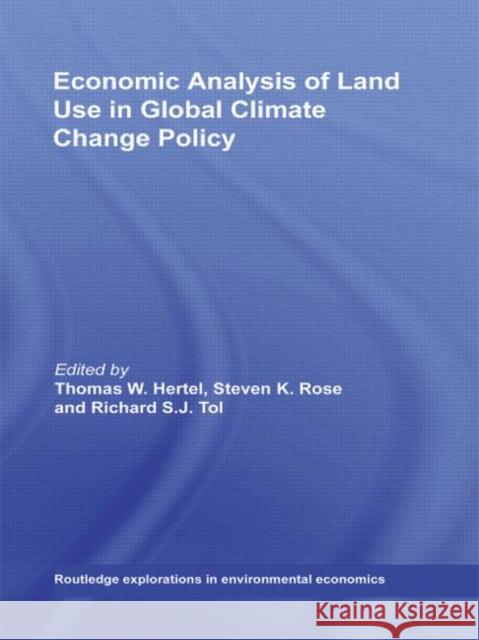Economic Analysis of Land Use in Global Climate Change Policy » książka
Economic Analysis of Land Use in Global Climate Change Policy
ISBN-13: 9780415773089 / Angielski / Twarda / 2009 / 348 str.
Economic Analysis of Land Use in Global Climate Change Policy
ISBN-13: 9780415773089 / Angielski / Twarda / 2009 / 348 str.
(netto: 718,58 VAT: 5%)
Najniższa cena z 30 dni: 748,32
ok. 22 dni roboczych
Bez gwarancji dostawy przed świętami
Darmowa dostawa!
Land has long been overlooked in economics. That is now changing. A substantial part of the solution to the climate crisis may lie in growing crops for fuel and using trees for storing carbon. This book investigates the potential of these options to reduce greenhouse gas emissions, estimates the costs to the economy, and analyses the trade-offs with growing food. The first part presents new databases that are necessary to underpin policy-relevant research in the field of climate change while describing and critically assessing the underlying data, the methodologies used, and the first applications. Together, the new data and the extended models allow for a thorough and comprehensive analysis of a land use and climate policy. This book outlines key empirical and analytical issues associated with modelling land use and land use change in the context of global climate change policy. It places special emphasis on the economy-wide competition for land and other resources, especially;
- The implications of changes in land use for the cost of climate change mitigation,
- Land use change as a result of mitigation, and
- Feedback from changes in the global climate to land use.
Land has long been neglected in economics. That is now changing. Recently, seven teams from Australia, the European Union, and the USA have, for the first time, included land use in their computable general equilibrium models, the work horses of economic policy analysis. This book describes and critically assesses the underlying data, the methodologies used, and the first applications. The applications are all to climate change and climate policy, but the methods and data can also be used for other applications, such as land use change and nature conservation.
This book outlines key empirical and analytical issues associated with modeling land use and land use change in the context of global climate change policy. It places special emphasis on the economy-wide competition for land and other resources, drawing out (a) the implications of changes in land use for the cost of climate change mitigation, (b) land use change as a result of mitigation, and (c) feedback from changes in the global climate to land use. By offering synthesis and evaluation of a variety of different approaches to this challenging field of research, this book will serve as a key reference for future work in the economic analysis of land use and climate change policy.











